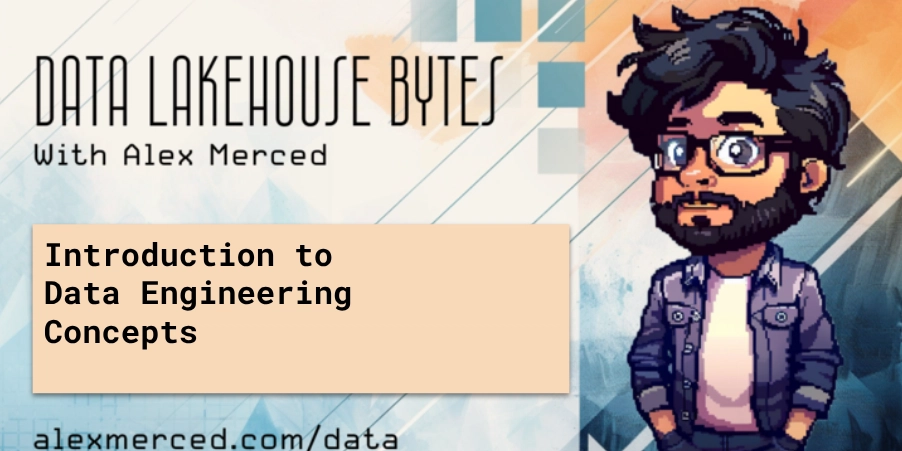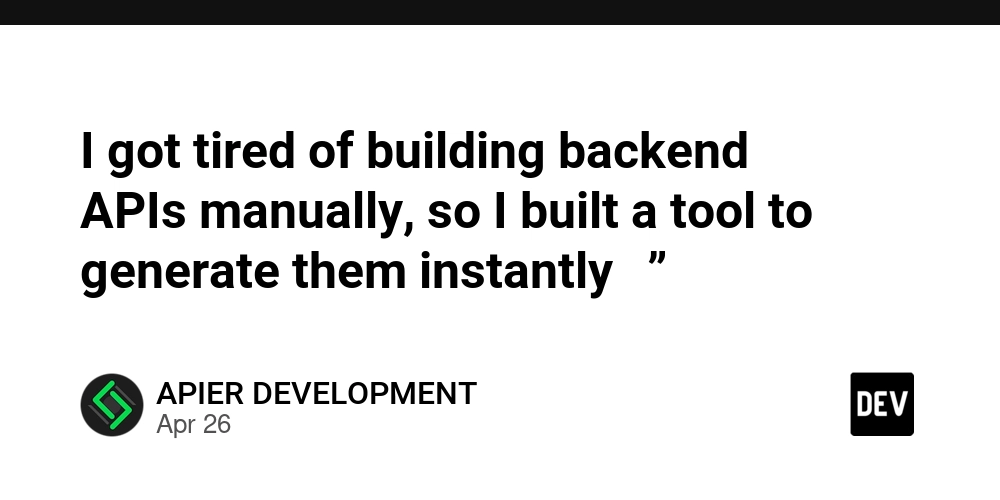Introduction to Data Engineering Concepts |15| Cloud Data Platforms and the Modern Stack
Free Resources Free Apache Iceberg Course Free Copy of “Apache Iceberg: The Definitive Guide” Free Copy of “Apache Polaris: The Definitive Guide” 2025 Apache Iceberg Architecture Guide How to Join the Iceberg Community Iceberg Lakehouse Engineering Video Playlist Ultimate Apache Iceberg Resource Guide The cloud has transformed how organizations approach data engineering. What once required physical servers, manual provisioning, and heavyweight infrastructure can now be spun up in minutes with managed, scalable services. But with this convenience comes complexity—deciding how to compose the right mix of tools and platforms for your data workflows. In this post, we’ll explore what defines the modern data stack, how cloud platforms like AWS, GCP, and Azure fit into the picture, and what principles guide the design of flexible, cloud-native data architectures. Moving Beyond On-Premise In traditional, on-premise data systems, teams had to manage everything themselves—hardware, networking, databases, storage, and backups. Scaling required buying more servers. Upgrades were slow, and experimentation was costly. Cloud platforms shifted this model. Infrastructure became elastic. Managed services replaced self-hosted databases and batch processing engines. What used to take weeks could now be done in hours. This shift enabled data engineers to focus more on business logic and less on infrastructure maintenance. But while the cloud solved many problems, it also introduced new decisions. With so many tools available, how do you choose the right combination? That’s where the concept of the modern data stack comes in. What Is the Modern Data Stack? The modern data stack refers to a collection of tools—often cloud-native—that work together to support the full data lifecycle: ingestion, transformation, storage, orchestration, and analysis. Typically, this stack includes: A cloud data warehouse like Snowflake, BigQuery, or Redshift An ingestion tool such as Fivetran, Airbyte, or custom streaming connectors A transformation framework like dbt An orchestration platform like Airflow or Prefect BI tools such as Looker, Mode, or Tableau These tools are designed to be modular and API-driven. You can swap components as your needs evolve, without having to rebuild the entire system. They also tend to embrace SQL, making them accessible to a broader range of users, including analysts and analytics engineers. This composability is powerful, but it requires thoughtful integration. Data engineers must understand how data flows across services, how metadata is preserved, and where bottlenecks can emerge. Managed Services in the Cloud Each major cloud provider offers a suite of services tailored to data engineering. On AWS, services like S3 (storage), Glue (ETL), Redshift (warehousing), and Kinesis (streaming) form the core building blocks. AWS is known for its breadth and flexibility, making it a strong choice for teams that want control and are comfortable managing complexity. Google Cloud Platform (GCP) centers around BigQuery, a serverless, high-performance data warehouse. Paired with Dataflow (streaming and batch processing), Pub/Sub (messaging), and Looker (BI), GCP offers a tight integration between services with a focus on simplicity and scale. Microsoft Azure provides tools like Synapse Analytics, Data Factory, and Event Hubs. It often appeals to enterprise environments already invested in Microsoft’s ecosystem, offering deep integration with Active Directory, Power BI, and other services. Each platform brings its own pricing models, performance characteristics, and operational trade-offs. Choosing one often comes down to organizational context—existing infrastructure, skillsets, and vendor relationships. Designing for Agility A key advantage of the cloud is its ability to support experimentation. You can test new tools, build proof-of-concepts, and iterate quickly without long procurement cycles or sunk infrastructure costs. This agility enables teams to build for today while planning for tomorrow. For example, a team might start with batch ingestion and transformation using dbt and Airflow. As data needs grow, they can add streaming layers with Kafka and Spark, or move toward a lakehouse architecture using Iceberg and Dremio. To design for agility, it’s important to decouple systems where possible. Avoid hard-wiring logic across tools. Use metadata and configuration layers to manage pipeline logic. Embrace standards like Parquet or Arrow to ensure interoperability between tools. Observability and governance also become more important in a distributed cloud environment. Knowing where your data is, how it’s being used, and who has access requires integrated monitoring, logging, and metadata management. The Cloud is Not Just a Hosting Model Adopting cloud data platforms is not just about moving infrastructure off-premise—it’s a

Free Resources
- Free Apache Iceberg Course
- Free Copy of “Apache Iceberg: The Definitive Guide”
- Free Copy of “Apache Polaris: The Definitive Guide”
- 2025 Apache Iceberg Architecture Guide
- How to Join the Iceberg Community
- Iceberg Lakehouse Engineering Video Playlist
- Ultimate Apache Iceberg Resource Guide
The cloud has transformed how organizations approach data engineering. What once required physical servers, manual provisioning, and heavyweight infrastructure can now be spun up in minutes with managed, scalable services. But with this convenience comes complexity—deciding how to compose the right mix of tools and platforms for your data workflows.
In this post, we’ll explore what defines the modern data stack, how cloud platforms like AWS, GCP, and Azure fit into the picture, and what principles guide the design of flexible, cloud-native data architectures.
Moving Beyond On-Premise
In traditional, on-premise data systems, teams had to manage everything themselves—hardware, networking, databases, storage, and backups. Scaling required buying more servers. Upgrades were slow, and experimentation was costly.
Cloud platforms shifted this model. Infrastructure became elastic. Managed services replaced self-hosted databases and batch processing engines. What used to take weeks could now be done in hours. This shift enabled data engineers to focus more on business logic and less on infrastructure maintenance.
But while the cloud solved many problems, it also introduced new decisions. With so many tools available, how do you choose the right combination? That’s where the concept of the modern data stack comes in.
What Is the Modern Data Stack?
The modern data stack refers to a collection of tools—often cloud-native—that work together to support the full data lifecycle: ingestion, transformation, storage, orchestration, and analysis.
Typically, this stack includes:
- A cloud data warehouse like Snowflake, BigQuery, or Redshift
- An ingestion tool such as Fivetran, Airbyte, or custom streaming connectors
- A transformation framework like dbt
- An orchestration platform like Airflow or Prefect
- BI tools such as Looker, Mode, or Tableau
These tools are designed to be modular and API-driven. You can swap components as your needs evolve, without having to rebuild the entire system. They also tend to embrace SQL, making them accessible to a broader range of users, including analysts and analytics engineers.
This composability is powerful, but it requires thoughtful integration. Data engineers must understand how data flows across services, how metadata is preserved, and where bottlenecks can emerge.
Managed Services in the Cloud
Each major cloud provider offers a suite of services tailored to data engineering.
On AWS, services like S3 (storage), Glue (ETL), Redshift (warehousing), and Kinesis (streaming) form the core building blocks. AWS is known for its breadth and flexibility, making it a strong choice for teams that want control and are comfortable managing complexity.
Google Cloud Platform (GCP) centers around BigQuery, a serverless, high-performance data warehouse. Paired with Dataflow (streaming and batch processing), Pub/Sub (messaging), and Looker (BI), GCP offers a tight integration between services with a focus on simplicity and scale.
Microsoft Azure provides tools like Synapse Analytics, Data Factory, and Event Hubs. It often appeals to enterprise environments already invested in Microsoft’s ecosystem, offering deep integration with Active Directory, Power BI, and other services.
Each platform brings its own pricing models, performance characteristics, and operational trade-offs. Choosing one often comes down to organizational context—existing infrastructure, skillsets, and vendor relationships.
Designing for Agility
A key advantage of the cloud is its ability to support experimentation. You can test new tools, build proof-of-concepts, and iterate quickly without long procurement cycles or sunk infrastructure costs.
This agility enables teams to build for today while planning for tomorrow. For example, a team might start with batch ingestion and transformation using dbt and Airflow. As data needs grow, they can add streaming layers with Kafka and Spark, or move toward a lakehouse architecture using Iceberg and Dremio.
To design for agility, it’s important to decouple systems where possible. Avoid hard-wiring logic across tools. Use metadata and configuration layers to manage pipeline logic. Embrace standards like Parquet or Arrow to ensure interoperability between tools.
Observability and governance also become more important in a distributed cloud environment. Knowing where your data is, how it’s being used, and who has access requires integrated monitoring, logging, and metadata management.
The Cloud is Not Just a Hosting Model
Adopting cloud data platforms is not just about moving infrastructure off-premise—it’s about rethinking how teams operate. Cloud-native architectures prioritize scalability, flexibility, and automation.
They allow you to treat data as a product, with well-defined interfaces, quality guarantees, and ownership. They enable collaboration across roles—engineers, analysts, and scientists—by providing shared platforms and standardized workflows.
Ultimately, the modern data stack is not a fixed set of tools, but a mindset. It's about building systems that are composable, observable, and adaptable. It’s about enabling fast iteration without sacrificing reliability.
In the next post, we’ll shift into the final phase of this series and explore the evolution toward data lakehouse architectures—what they are, why they matter, and how they unify the best of both lakes and warehouses.





































































































































































![[The AI Show Episode 145]: OpenAI Releases o3 and o4-mini, AI Is Causing “Quiet Layoffs,” Executive Order on Youth AI Education & GPT-4o’s Controversial Update](https://www.marketingaiinstitute.com/hubfs/ep%20145%20cover.png)





























































































































![[FREE EBOOKS] Learn Computer Forensics — 2nd edition, AI and Business Rule Engines for Excel Power Users & Four More Best Selling Titles](https://www.javacodegeeks.com/wp-content/uploads/2012/12/jcg-logo.jpg)





![From Art School Drop-out to Microsoft Engineer with Shashi Lo [Podcast #170]](https://cdn.hashnode.com/res/hashnode/image/upload/v1746203291209/439bf16b-c820-4fe8-b69e-94d80533b2df.png?#)






































































































(1).jpg?#)
































_Inge_Johnsson-Alamy.jpg?width=1280&auto=webp&quality=80&disable=upscale#)











































































































![Apple to Split iPhone Launches Across Fall and Spring in Major Shakeup [Report]](https://www.iclarified.com/images/news/97211/97211/97211-640.jpg)
![Apple to Move Camera to Top Left, Hide Face ID Under Display in iPhone 18 Pro Redesign [Report]](https://www.iclarified.com/images/news/97212/97212/97212-640.jpg)
![Apple Developing Battery Case for iPhone 17 Air Amid Battery Life Concerns [Report]](https://www.iclarified.com/images/news/97208/97208/97208-640.jpg)
![AirPods 4 On Sale for $99 [Lowest Price Ever]](https://www.iclarified.com/images/news/97206/97206/97206-640.jpg)































![[Updated] Samsung’s 65-inch 4K Smart TV Just Crashed to $299 — That’s Cheaper Than an iPad](https://www.androidheadlines.com/wp-content/uploads/2025/05/samsung-du7200.jpg)



































































